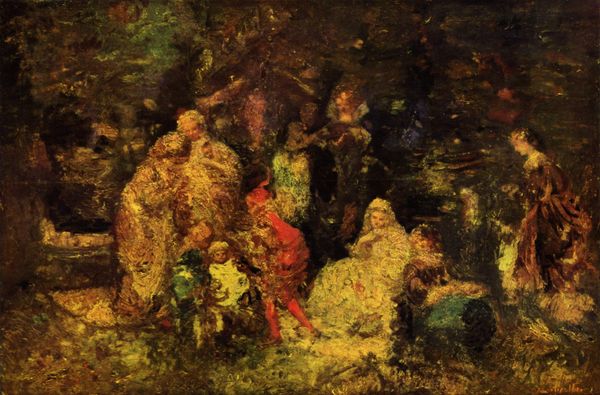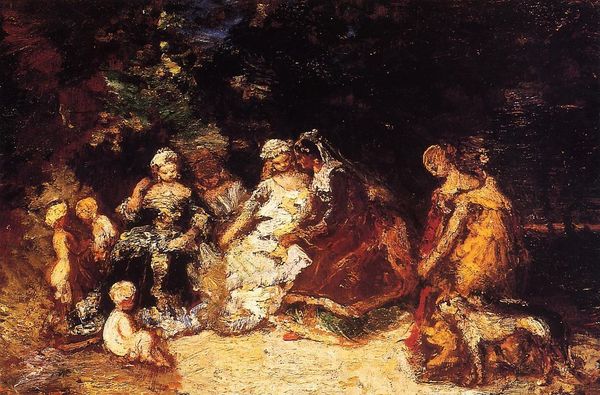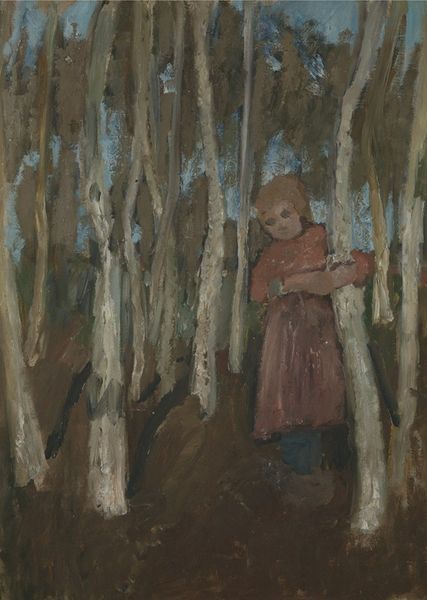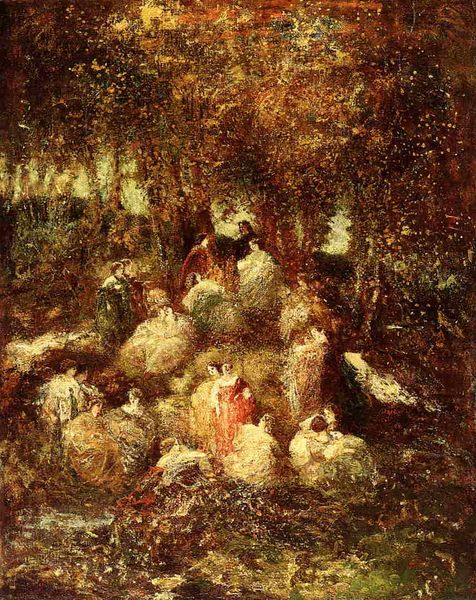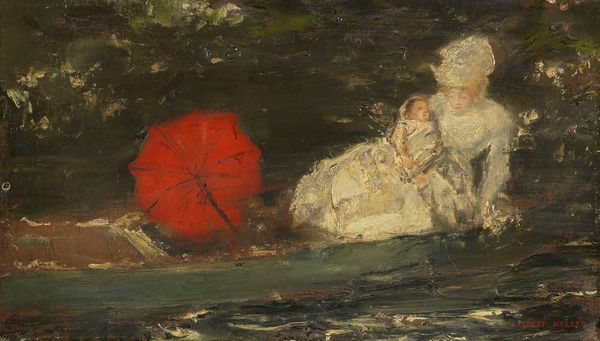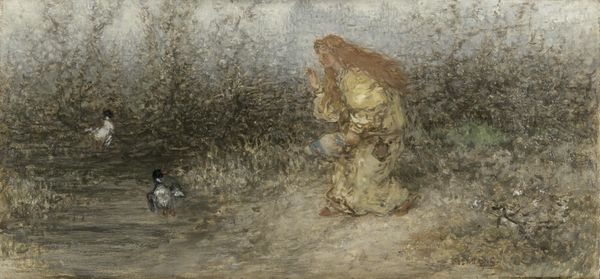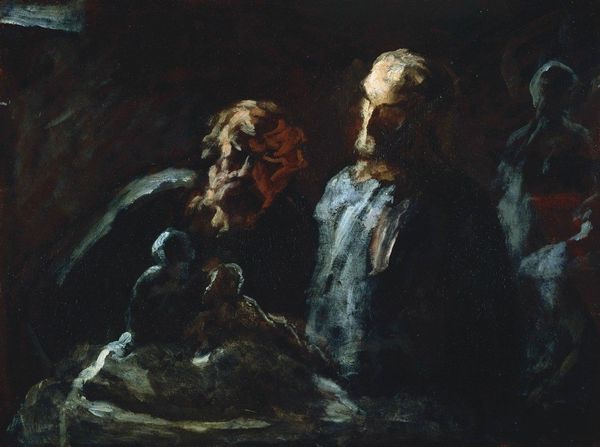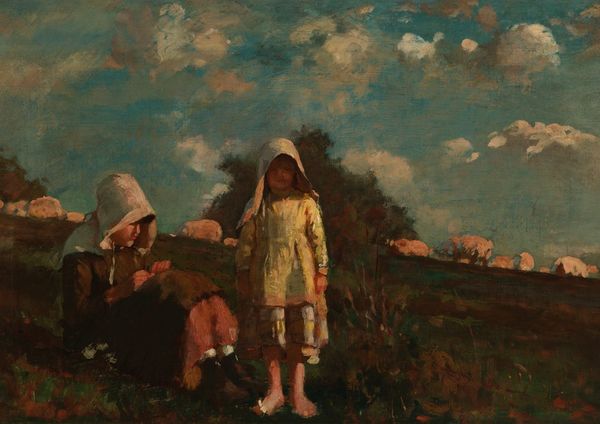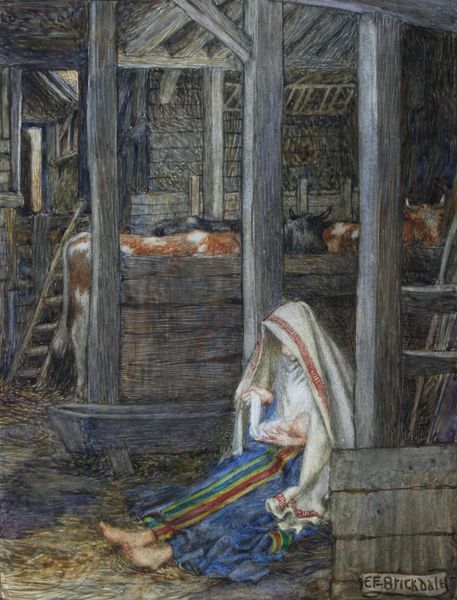
oil-paint
#
oil-paint
#
landscape
#
figuration
#
oil painting
#
neo expressionist
#
romanticism
#
expressionism
#
mythology
#
genre-painting
#
history-painting
#
expressionist
Copyright: Public Domain: Artvee
Curator: My initial feeling is melancholy. It’s quite a dark, evocative little oil painting. Editor: Indeed. We're looking at Eduard Veith's work, titled "Waldfrau und Amoretten". He was an Austrian artist. The date of creation remains unknown, which is unfortunate. Curator: The woman in the red cloak really draws the eye. She embodies a sense of both vulnerability and silent strength. She looks displaced somehow. Do you think the symbolism is tied to the landscape itself? Editor: Certainly. Forests are powerful symbols, laden with cultural baggage. They represent the untamed, the subconscious. Veith places her—perhaps a forest spirit or wood-nymph figure—within this context, along with those intriguing cherubic figures. The interplay could be an allegory for innocence encountering nature. Or maybe a modern fairytale commentary? Curator: Possibly. I’m especially drawn to the way Veith contrasts the brightness of the figures with the darkness of the forest. The symbolism suggests innocence juxtaposed against something primal and possibly threatening. Editor: What I find remarkable is how Veith navigates this tension. He situates it within a recognizable history of Romantic landscape, invoking folklore while speaking to a burgeoning sense of national identity among Austrians. He wasn’t just painting a pretty picture. He’s tapping into complex cultural anxieties. It's all so theatrical. Curator: Exactly. It is deeply psychological, wouldn't you agree? Veith’s "Waldfrau und Amoretten" allows us to witness and imagine a scene brimming with hidden meanings and echoes of mythology, the interaction and intersection of nature, childhood, and the echoes of cultural memory. Editor: Absolutely. Veith reminds us that art serves as more than decoration. He places the artwork within a framework that’s at once familiar and strangely unsettling. In truth, that makes it enduring.
Comments
No comments
Be the first to comment and join the conversation on the ultimate creative platform.
